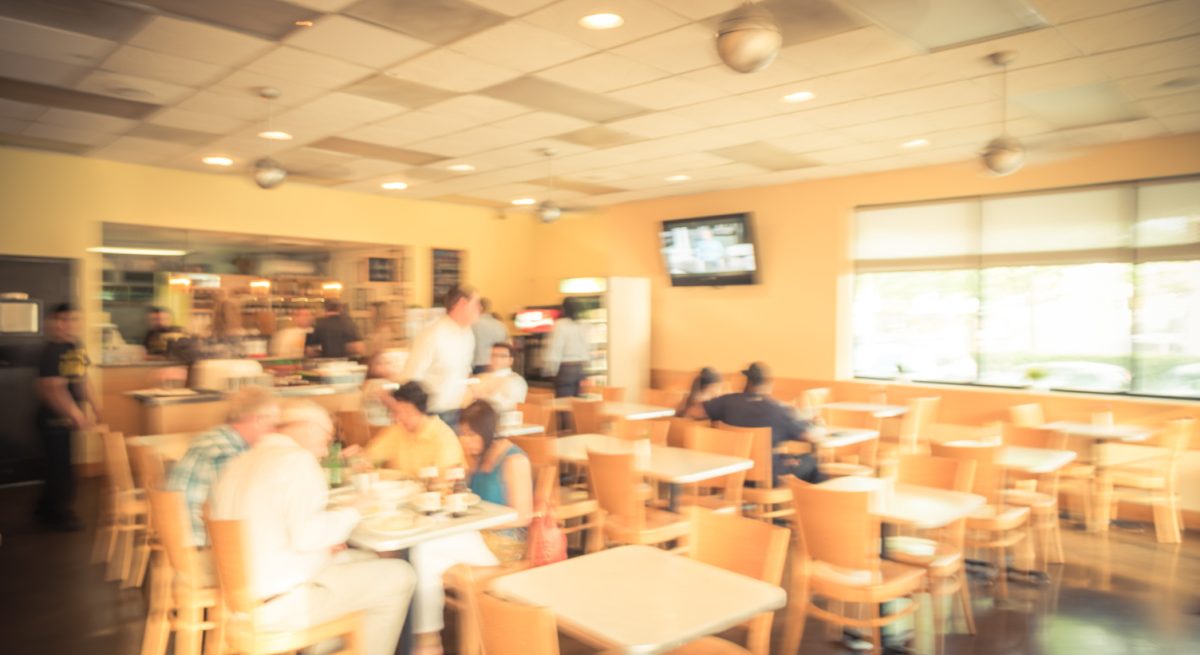Modern Restaurant Design Trends Shaping the Industry
4 Min Read By David Tracz
The past few years have been critical for restaurants as owners and operators have had to quickly adapt and modernize alongside the changing climate and consumer demands. It has been a roller coaster for restaurant management as challenges like staffing shortages and mask mandates have made it difficult to keep business alive and thriving. While there’s no crystal clear direction for the industry in 2022, there are restaurant design trends that could help shape the food and beverage scene for the better. In fact, embracing these key concepts might just give restaurants the competitive edge they need to stay relevant in the years to come.
Takeout is Taking Over
While the popularity of takeout continues to rise, it’s important that operators and other restaurant decision-makers recognize that “intentional design” is key to best accommodate this growing demand. How quickly can third-party delivery groups get in and out of the food and beverage space? Can the third party make it to the takeout portion of the restaurant without disturbing the flow of patrons who are staying for a meal or are in-line to place an order?
The increase in online ordering is changing the way designers view restaurant layouts and floor plans. While new and remodeled restaurants have the luxury of approaching this with intention from the start––ensuring there is a designated area for third-party groups––existing restaurants don’t have the same ease of opportunity. Instead, management should consider adjustments that allow for a clear path for takeout and delivery drivers, whether that be through temporary (yet aesthetically pleasing) signage or an alluring component that keeps dine-in patrons to one side, and those who intend to grab-and-go to the other. Designers are exploring new areas for pickup that come across as a “decorative element” in the space, while also providing an efficient pathway for those traveling through in a hurry. With all of that said, a clever takeout design and layout is crucial for today’s restaurants.
Long Live the Community Table
Though it may be contrary to popular belief, communal tables aren’t going away any time soon. While some speculated that the community table would die out due to social distancing, in moments of low cases and lifted regulations, individuals flock to these areas to grab a quick bite and reconnect with coworkers, family, and friends. Before management considers doing away with these tables in existing properties or not bringing them up for consideration in new builds or renovations, it’s worth exploring all the benefits this style brings to the dining space.
From a safety perspective, communal tables can be easily adjusted based on current CDC recommendations as certain seats and portions of the table can be blocked off to limit capacity. The community table still has it’s pull, especially for those walk-in patrons that don’t have time to make a reservation, but would prefer to take a seat indoors to enjoy their impromptu meal. Though it can technically fit large groups, it’s also a great option for people who are dining alone. The communal table gives patrons the feeling that they’re not by themselves while offering space to spread out if the diner brought books or their laptop and are looking to sit down and stay awhile. In fact, major hotel brands are even retaining or enhancing their community tables within lobbies and restaurants to allow people to work and eat in these spaces.
One of the biggest benefits of the communal table is that it’s flexible enough to accommodate the community’s needs as they change. Looking to socialize? Interested in dining alone, but don’t want to feel isolated? Didn’t make reservations but would love to sit down and enjoy a meal at a local restaurant on your lunch break? Just as its namesake suggests the communal table could be of use to anyone in the community at some point in time on any given day. Additionally, it is a great, practical option to have available for restaurants when they’re able to host larger gatherings, banquets, and other events.
The recommendation here is to think twice before parting ways with the beloved community table. Afterall, gathering together for a meal is a cornerstone of American culture and what better supports this tradition than a communal table?
It’s All in the Details
While the lines between fine and casual dining become more blurred, one trend that continues to define both styles is the attention to detail. Key stakeholders in the restaurant industry have to regularly ask themselves, “what about this restaurant will inspire patrons to come back?” especially now when dining destinations are constantly looking for new ways to boost foot traffic. From a design perspective, details could boil down to locally sourced art, bright pops of color, or intriguing murals that speak to the roots of the brand’s cuisine.
LED Lighting is another “detail” element that has become increasingly important to create the desired atmosphere in modern restaurants; whether that’s offering more warmth in the space during the winter months, or dimming the lights to create a romantic vibe. While the idea of lighting may seem straightforward for a dining space, it could be that defining component that entices a patron to keep coming back. Lighting is a great way for a space to feel different throughout the day, such as an abundance of access to natural light in the morning for a coffee break with coworkers or charming sconces with dim lighting that lend themselves to a romantic evening out for couples.
The Freshman, which uniquely operates as both a coffee shop and cocktail bar, opened in Arlington, Virginia in April 2021. The restaurant features an open-style layout and transforms seamlessly from day (as a coffee shop) to night (as a cocktail bar)––the transition is made visually possible through the design details. The color story celebrates the duality of the space; the bar is highlighted with mustard and butternut yellow details, juxtaposing a deep-hued blue. The colors are lit by dark brass pendant lights in the evening, and during the day, natural light floods through the ten-foot-tall windows for a lighter atmosphere.
The COVID-19 pandemic has left long-lasting effects on several industries and perhaps one of the hardest hit has been food and beverage. While many are using online ordering platforms for their next meal, others are still drawn to the experiences of their local dining establishments. Restaurants must always evolve to stand out from their competition, and now, more than ever before, owners and operators are looking for solutions and fresh concepts to keep their seats filled and their staffing roster full. Creating thoughtful layout to allow for third-party delivery services, embracing the communal table, and carefully layering enticing details throughout the design can be the elements that keep customers coming back to support their favorite restaurants.


